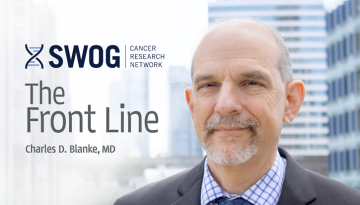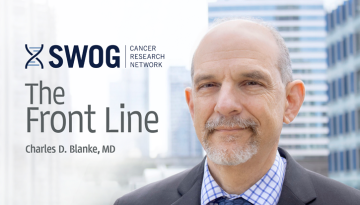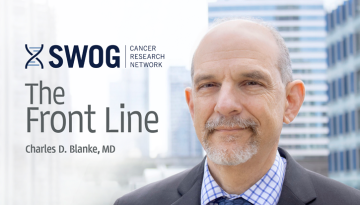Benefits of NCTN Trials Quantified: Enormous!
Fourteen million. That’s the number of years of added life gained by adults with cancer in the U.S. over 40 years, thanks to NCI National Clinical Trials Network (NCTN) studies.
Those of us who have long worked within the cancer research cooperative group system know our NCTN work makes a difference. But we didn’t know how much – the collective impact of this work had never been systematically quantified. Until now.
Our own Dr. Joseph Unger, who several years ago quantified the cumulative impact of SWOG’s trials on the lives of people with cancer, has similarly analyzed the cumulative impact of the trials of all of the adult U.S. NCTN groups. He reported his findings earlier this week at the ESMO Congress 2021 in Paris. Here is the abstract, and here is our press release.
The results he previously reported for SWOG essentially held true across the NCTN. Over four decades, adults in the U.S. diagnosed with cancer gained 14 million years of additional life because of the published results of NCTN clinical trials. And they will continue to benefit patients – see below.
To come up with this number, Joe identified 163 randomized, phase III trials by the adult groups from 1980 through 2019 that reported statistically significant results in favor of the experimental arm for at least one clinical, time-dependent outcome. From these, he worked with a subset of 128 trials that found either improved overall survival time or a trend to improved overall survival. He estimated life year gains for these 128 trials and mapped those gains onto SEER (Surveillance, Epidemiology, and End Results) Program data on the numbers of people with cancer in the U.S. The result was 14.0 million years of added life. The number of life years saved will continue to grow, reaching an estimate of 23 million by 2030. And that figure does not include new positive trials that will also add life years saved.
He also measured the clinical and scientific impact of those 163 studies. More than 80 percent of the trials have been cited in cancer care guidelines in favor of the recommended treatment. And those studies have been cited in subsequent literature more than 166,000 times – an average of 64 citations per year for each trial.
In short, the efficacy of the groups is monumental!
What there was not room to highlight in this report but which bears repeating is that much of this high-impact research was of a type not done by other researchers – trials comparing combinations of drugs from different companies or testing multiple modes of treatment, for example. These kinds of trials tend not to be done by pharmaceutical companies and can’t be done at scale by single institutions.
So all of you who get up early every morning and work to develop or conduct our clinical trials or to provide care to the participants in our trials, know that we’re making a difference – a huge difference.
I want to thank my counterparts at the Alliance, ECOG-ACRIN, and NRG for collaborating on this testament to the collective impact of our work. We’re all co-authors on the abstract. Props also go to Joe Unger for bringing together all four groups to collect the data that made this possible. I’m pleased to say we’ve been asked to present these findings at the ECOG-ACRIN group meeting plenary session late next month.
Finally, none of those 14 million years would have been added without the volunteers who participate in our studies. The 163 studies Joe analyzed enrolled 108,102 participants. Hundreds of thousands of others have enrolled in other NCTN trials since the formation of the cooperative group system more than half a century ago. To all of those participants – these 14 million years are just part of the gift you have given to your fellow patients with cancer and to the future. All we can say is thank you.
Other Recent Stories



